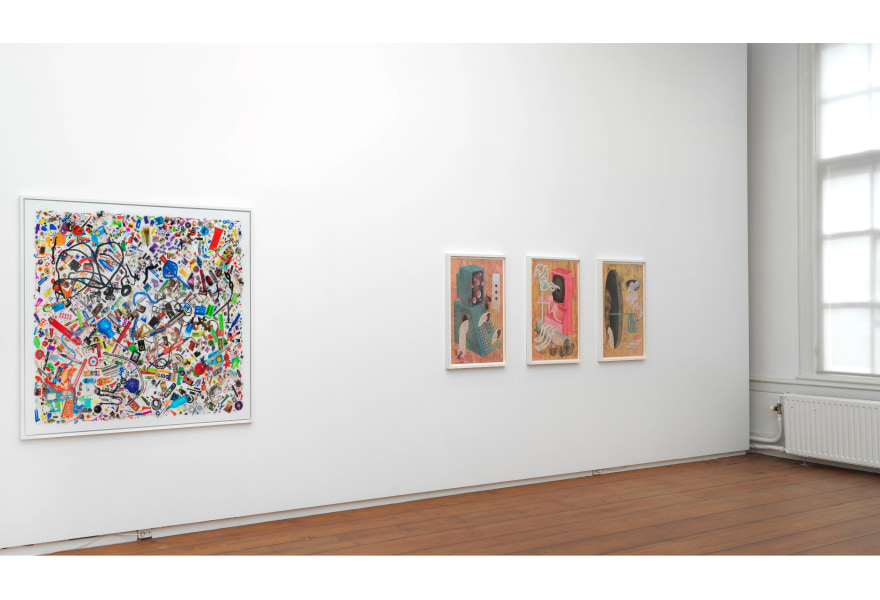18 july 2023, Wouter van den Eijkel
Summer in the City - part 2
The summer programming at galleries is always slightly different. No solo shows with household names during the summer, but often group exhibitions. Two weeks ago, we talked about three galleries that offer a platform to recent graduates and new talents. This time, you can read about three galleries that have chosen to present an overview of artists from their programme. An excellent opportunity for visitors to get to know a gallery’s programme in a single visit.
Who is who in the Zoo? | galerie dudokdegroot
“For us as a gallery, the best part about a summer exhibition is curating it,” says Jedithja de Groot. “You go through all work based on a theme and discover that the artists you show address the same themes. It’s also interesting for visitors to see such coherence in the programming.”
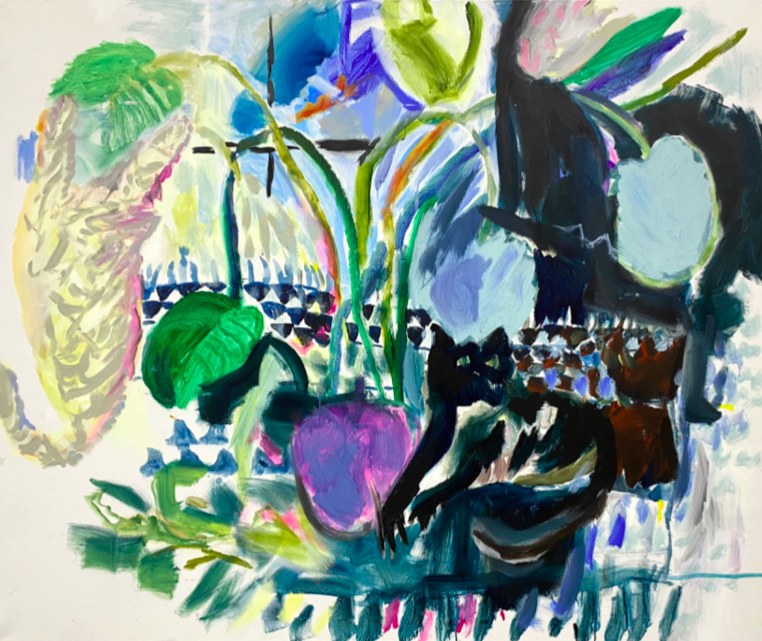
Eva Räder, Katze mit Teppich, Vase, Monstera und drei weitere Katzen, 2023, galerie dudokdegroot
The title Who is Who in the Zoo? can literally be found on a drawing in Guy Vording's series Black Pages, in which he almost completely covers pages from a copy of Life Magazine from the 1950s under a layer of black graphite. The animal theme, however, was inspired by work by German painter Eva Räder, which often features animals. As a result, this summer, the gallery has become a menagerie with cats, a dog, a swan, bees, chimpanzees, grazing cows, amoebas, microorganisms and four eggs.
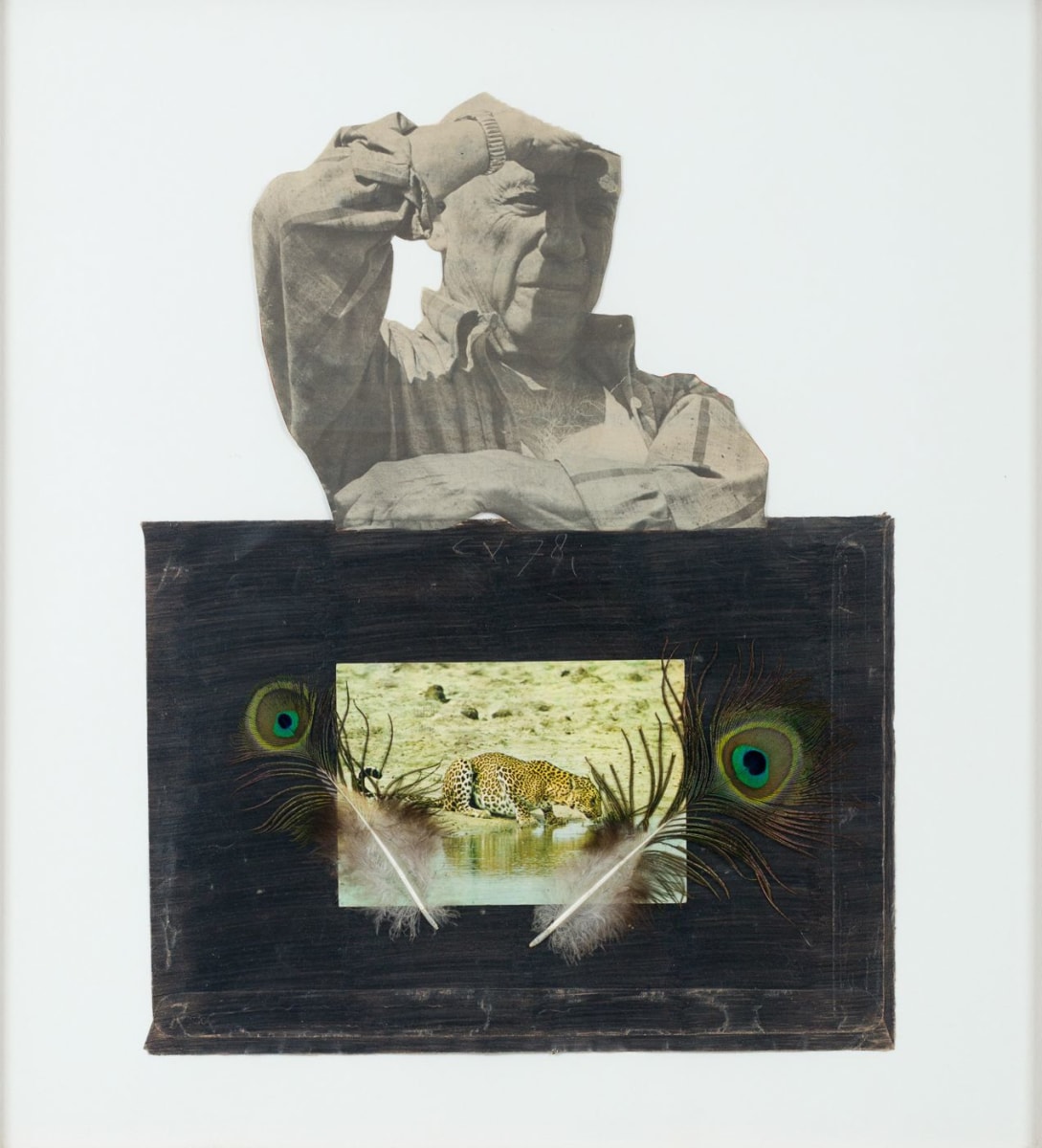
Carel Visser, zonder titel, 1978, galerie dudokdegroot
The top of the food chain can be found at the entrance in the form of a collage by Carel Visser. The work consists of a newspaper photograph of Picasso holding his hand above his eyes like someone looking into the light. Below this, a panther is flanked by two peacock feathers. Elsewhere in the chain, you’ll find Paul Bogaers' fish. An exciting mix of photography, paper mâché and objet trouvé: bicycle lights found in the street, broken carrier straps and lost bike fenders.

Paul Bogaers, z.t., 2023, galerie dudokdegroot
Who is Who in the Zoo? can be seen until Saturday 22 July. After that, by appointment only until August 26. Featuring work by Marjolein Blom, Paul Bogaers, Delphine Courtillot, Fleur van Dodewaard, PolakVanBekkum, Eva Räder, Carel Visser and Guy Vording.
Mixed Feelings | Upstream Gallery
Every form of progress has a downside, a regression. That is the starting point of Mixed Feelings, a group exhibition at Upstream, a gallery that always devotes considerable attention to new, digital art forms.
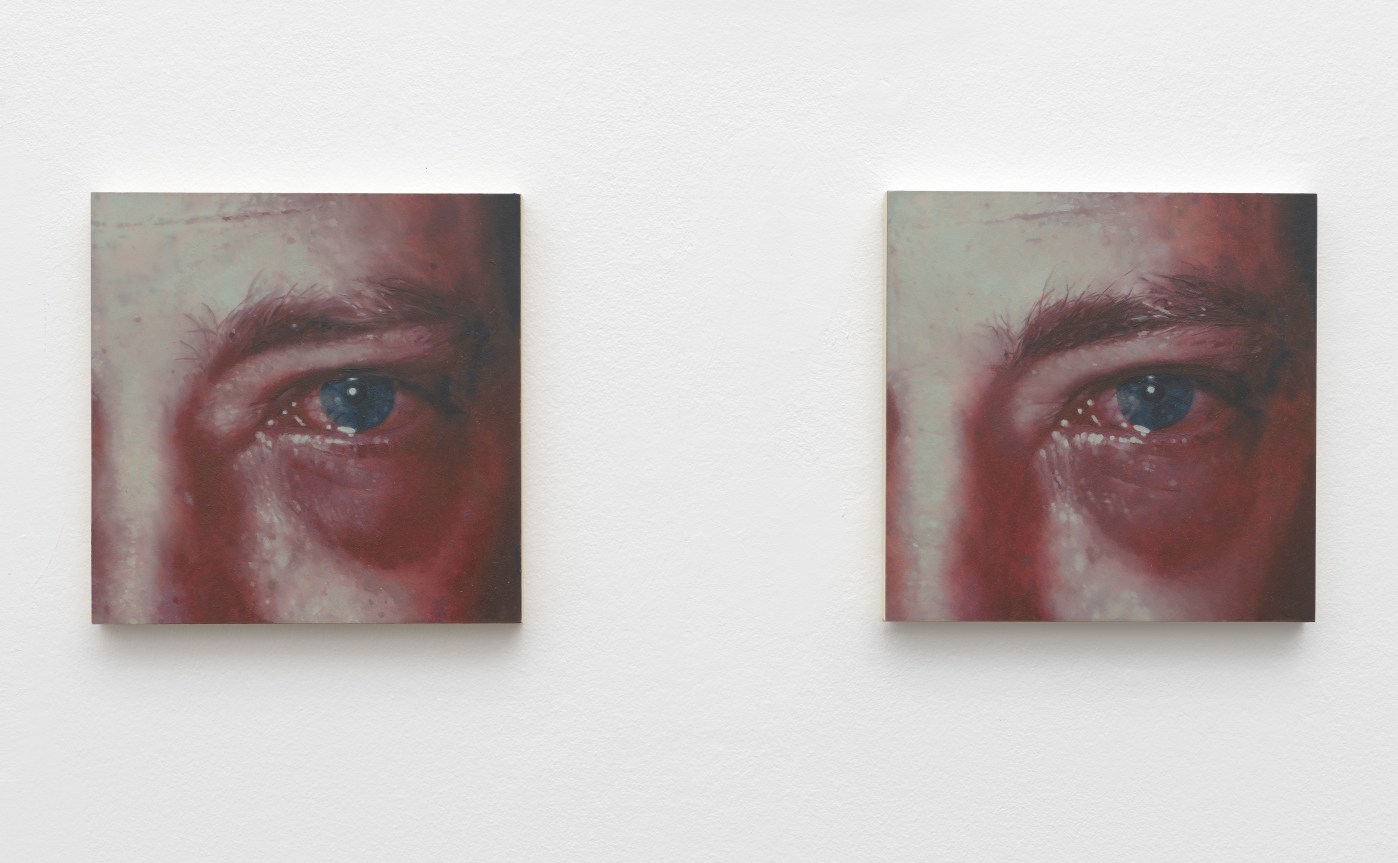
David Haines, Signal, 2023, Upstream Gallery
David Haines explores, for example, how painting relates to today’s information society. For Signal (2023), he painted the most used online image of an eye infection twice. The bloodshot left eye stares at you wearily on both panels as a kind of criticism of the endless stream of digital images we consume daily. Unlike the replicable images online, the panels are not completely the same, yet almost identical. In the difference lies the added value of painting and, by extension, human contact.
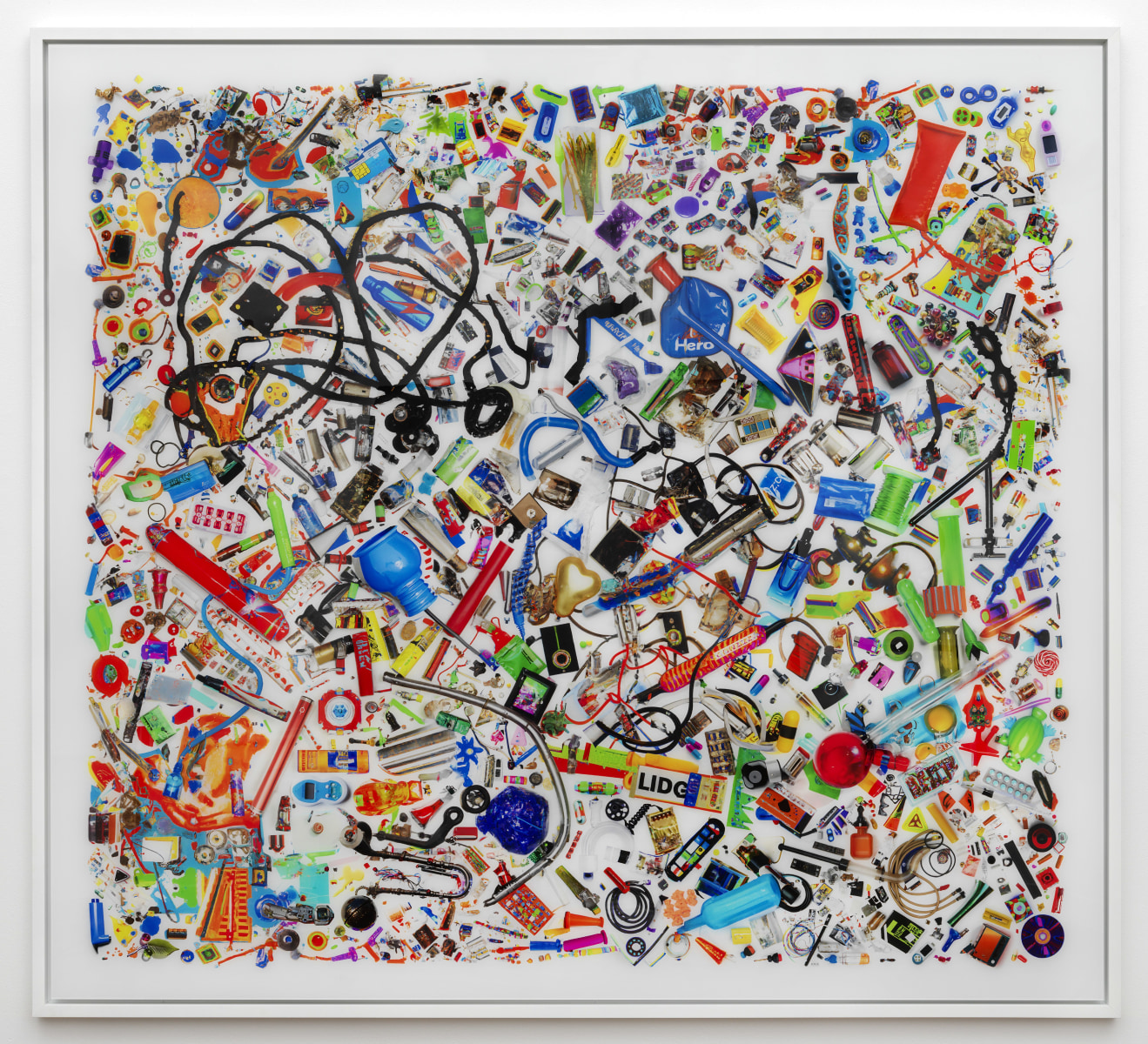
Tabor Robak, Nuke, 2023, Upstream Gallery
One of the highlights of Mixed Feelings is Nuke by American artist Tabor Robak. Inspired by the sci-fi theme of fictional drugs, such as Soma in Aldous Huxley's Brave New World, Nuke is composed of hundreds of AI-generated images of futuristic drug paraphernalia. Using countless tubes, jars, hoses, pipes and cylinders, Robak compares our blind faith in and dependence on AI to an addiction and addresses the adverse effects on our creativity. The image is not equally sharp everywhere because sometimes, AI does not (yet) offer a solution.
At first glance, French artist Kévin Bray seems to enjoy the benefits of the digital era, but he too has his reservations. His work resembles playful collages with countless references to popular culture and the internet, and Bray also eagerly experiments with different programs and tools. At the same time, Bray is also critical of the use of those tools, because their use increasingly results in a homogeneous visual language.

Kévin Bray, It is commodifying the depth for the growth of others, 2023, Upstream Gallery
Bray wants to break this cycle by looking for different forms of storytelling. For example, in It is commodifying the depth for the growth of others and Less they touch the ground and more they decide for it, he reverts to historical stories that still have an effect today and uses techniques originating from painting, such as trompe l'oeil.
Mixed Feelings can be seen at Upstream in Amsterdam until August 5. Featuring work by Frank Ammerlaan, Marc Bijl, Kévin Bray, Harm van den Dorpel, Mandy Franca, David Haines, Auriea Harvey, Jen Liu, Noor Nuyten, Ronald Ophuis and Tabor Robak.
Connecting the Future | Josilda da Conceição Gallery
Connecting the Future was to be an exchange with five young artists from the DOTS Gallery in Belgrade. A great initiative, but unfortunately, it didn’t work out as planned logistically, so Da Conceição abandoned the original idea. Instead, she has put together an overview of her artists, supplemented with a number of works by Bogdan Djukanovic, Vanja Subotic and Lazar Stojic.
The latter makes small works the size of banknotes, euro banknotes to be exact – the currency of the European Union with which the Serbian government has a difficult relationship. But Stojic does not devote attention to monetary value, rather the European architectural heritage on the notes, a shared heritage that spans the entire continent that does not omit Serbia.

Ruben Raven, Cuckoo Flower, 2022, Josilda da Conceição
A recent work by Ruben Raven is also on display, created for his show together with Joeri Woudstra. The duo used AI to develop ideas, which Raven then developed further with pencil on canvas.
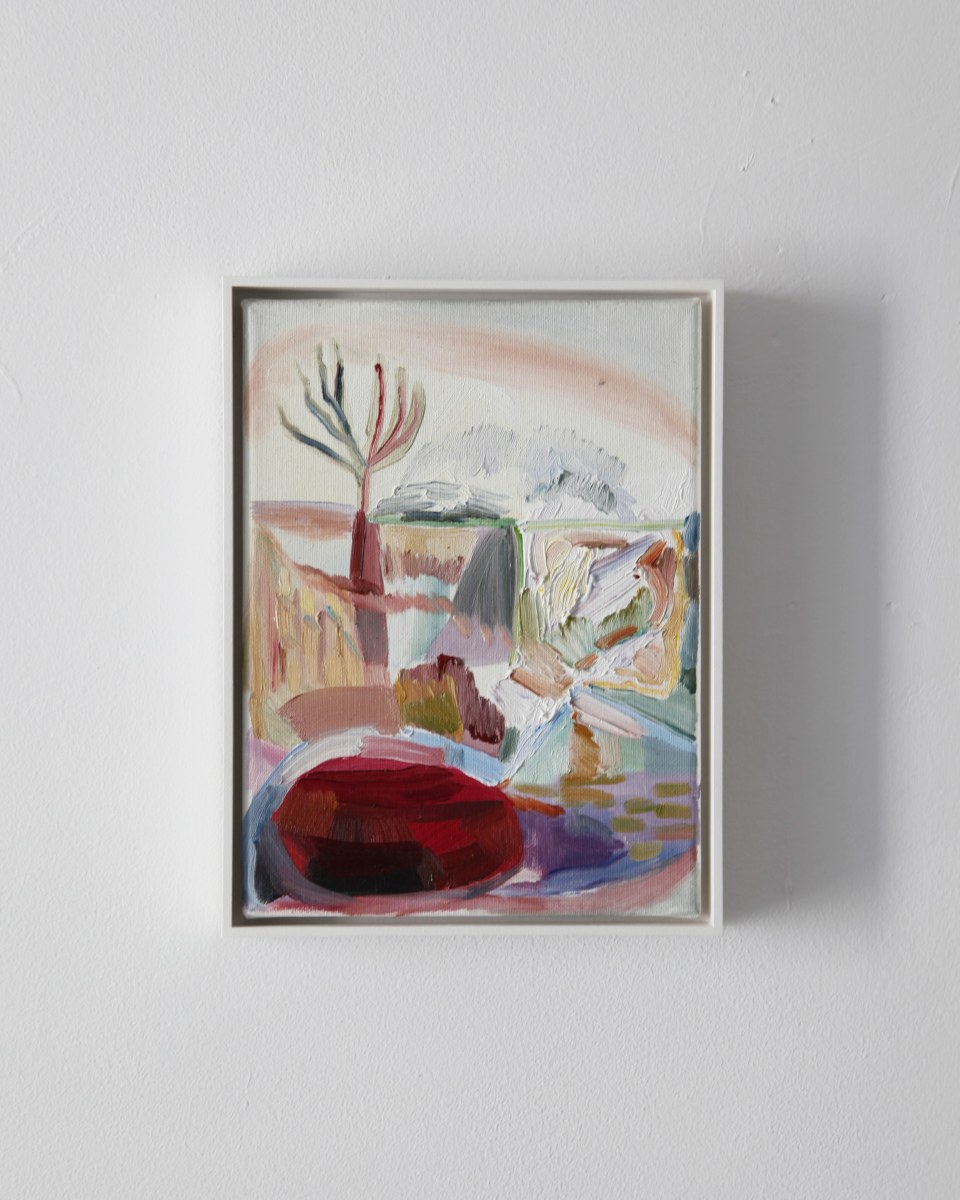
Jo Wu, Untitled, 2022, Josilda da Conceição
There are also be a number of small landscapes and still lifes by Jo Wu, the young Taiwanese painter who has been working with Da Conceição since the beginning of the year. Wu, who is currently studying at KASK in Ghent, considers her artistic practice a way to process deep emotions such as loss and grief and convert them into a personal, physical truth that is both impersonal and universal.
Connecting the Future can be seen until July 29. Featuring work by Ruben Raven, Rob Bouwman, Lena Milovanovic, Bogdan Djukanovic, Geraldo Dos Santos, Jo Wu, Juliet Aaltonen, Vanja Subotic, Lazar Stojic.
